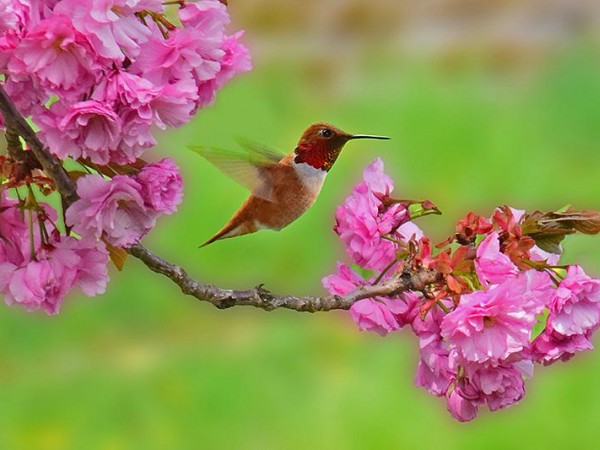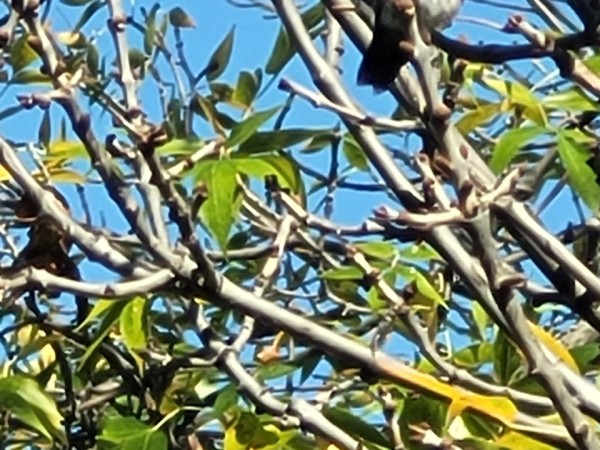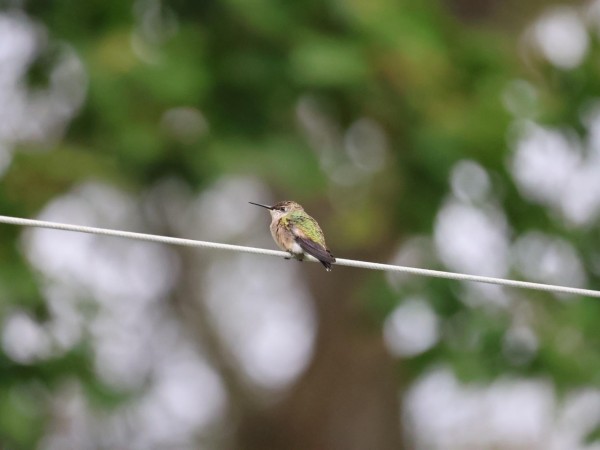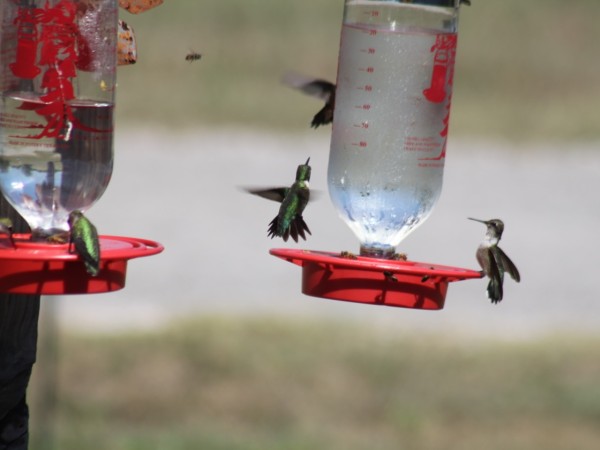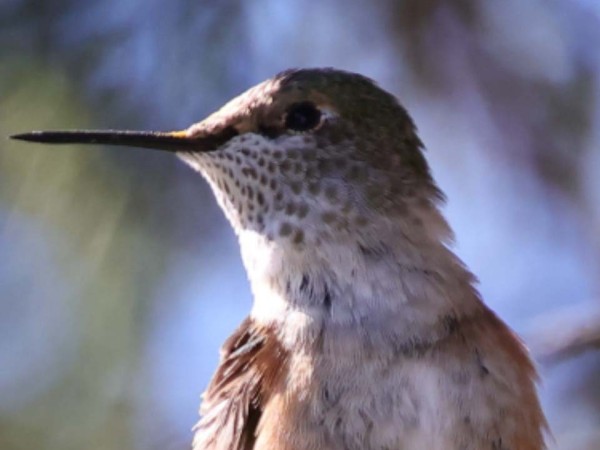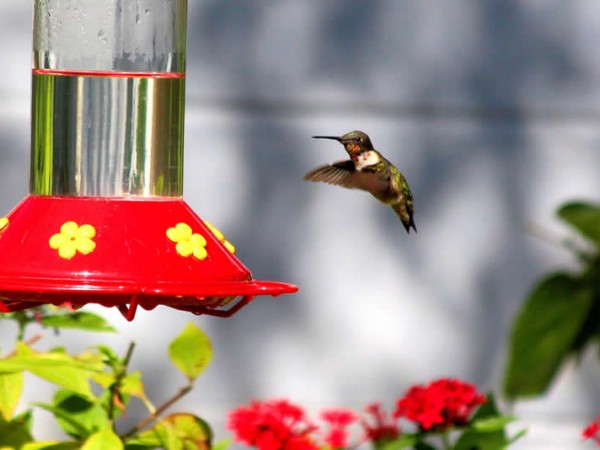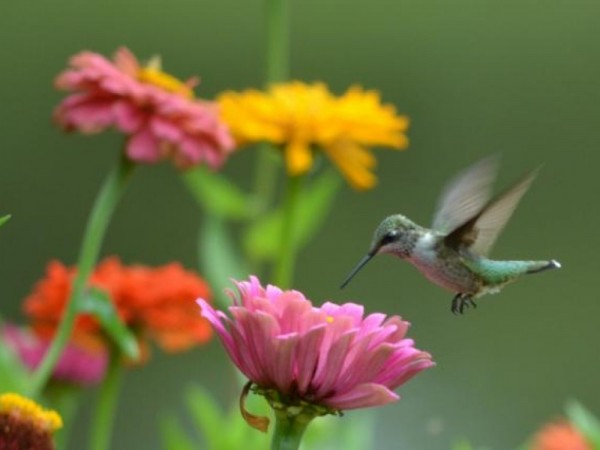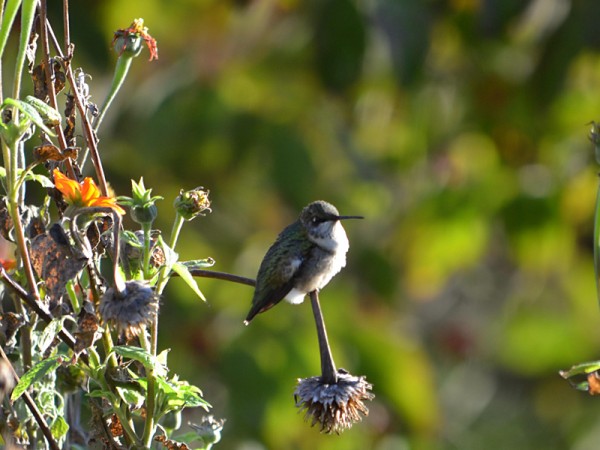Journeying Across North America
Mid-October is here. Cooling temperatures and shortening daylight length are triggering hummingbirds throughout North America to head south. Join us in celebrating the incredible journeys of hummingbirds and other species this Saturday, October 14 on World Migratory Bird Day.
Celebrate World Migratory Bird Day on Saturday, October 14
World Migratory Bird Day, a global campaign that aims to raise awareness of migratory birds and the need for international cooperation to conserve them, is this Saturday, October 14. The theme of this year’s celebration is “Water: Sustaining Bird Life.”
The vast majority of migratory birds rely on aquatic ecosystems during their life cycles for feeding, drinking, or nesting, and also as places to rest and refuel during their long journeys. Yet factors such as increasing human demand for water, climate change, and pollution are threatening these aquatic ecosystems and the birds that rely on them.
Journey North is proud to join with you, our volunteers, and many others who believe strongly that migratory birds connect us with their unique songs and flights, and remind us of the importance of working together, across borders, to protect them.
Join the global campaign by listening to — and watching birds — wherever you find yourself this weekend. And report your bird observations to Journey North as we work together to conserve and protect these species and the water and habitats upon which they rely.
Read more in the World Migratory Bird Day 2023 News Release»
Stragglers in Northern Regions
Journey North volunteers are still reporting hummingbirds throughout the Upper Midwest, Northeast, and parts of Canada. With temperatures falling and daylight shortening, reports in these regions should steadily drop over the next few weeks. Explore our Hummingbird Sighting map to see how these late-season reports compare to previous years. And remember to keep feeders up for stragglers that may yet stop by!
Laura in Hampton Bays, NY: "Fall Migration: one female still staying put drinking from feeders and flowers. This is the longest I have seen a female hummer stay - typically the flock leaves end of Sept! I’m thinking this female has migrated from up North and is staying put to fatten up. She is looking healthy!" (10/11/2023)
Mike in St. Paul, MN: "With the sighting of a ruby-throated hummingbird today (10/11), we eclipsed our previous latest sighting date of an RTHB by one day (previous latest sighting date was 10/10 in 2013). We had 2 hummers yesterday evening but did not see 2 together today. So the 2nd one clearly left today. This hummer fed almost completely on insects and nectar from black-and-blue salvias, pink salvia and cigar flowers. Very little nectaring at feeders today. This juvenile male has been here several days and really put on weight. This evening he chased off a small warbler. Hysterical. The day was sunny with a high of 57° with an overnight local frost. Quitting time was 6:49 p.m. CDT. Keep your feeders up to the south!" (10/11/2023)
Michele in Stratford, ON: "Sighted at 8:50 am. 6 degrees Celsius. Hope it’s not too late for migration. Appeared healthy, saw it ‘cleaning’ its tongue." (10/12/2023)
More Activity Farther South
Feeding and migratory activity remain high along the Mississippi (Central) and Atlantic (Eastern) flyways and down through the Gulf Coast. This could be another big week for migration as the above-mentioned hummingbirds farther north make their way south.
Jessie in Bayside, TX: "We began the season with 70-100 and we’re still seeing 6 daily" (10/06/2023)
Out West
Hummingbird species out west are showing movement as well. Several species of hummingbirds have been observed finding nectar sources en route to their wintering grounds. Some species, like Anna's, either don’t migrate or only migrate short distances. What are our volunteers observing out west? Please share your observations with us!
Nancy in Santa Fe, NM: "Female Black Chin at Hyssop and feeder." (10/04/2023)
Ann in Woodside, CA: "One Anna's hummingbird chasing another." (10/05/2023)
Nancy in Albuquerque, NM: "Youngsters born in our yard left a couple of weeks ago. Seeing migrators since then. Our first sighting was April 10, 2023. Largest number of birds occurs late July, early August. Maximum this season was about 25. Down to one a day now. Will leave our feeders up another week." (10/05/2023)
Maresa in Datil, NM: "Immature Broadtail male hummingbird on a number of different flowers." (10/08/2023)
Mary in Colorado Springs, CO: "2 Broad-Tailed drinking from feeders and nectaring at plants." (10/09/2023)
Keep Reporting and Keep Feeders Up
If you’re still observing hummingbird activity, keep reporting to Journey North. And if possible, please include photos in your reports and mention the hummingbird species in the comments.
Remember to keep your feeders up at least a couple weeks after your last sighting. With fewer flowers in bloom this late in the season, stragglers need feeders as reliable sources of food. Don’t be concerned: feeders will not cause hummingbirds to stay longer than they should.





